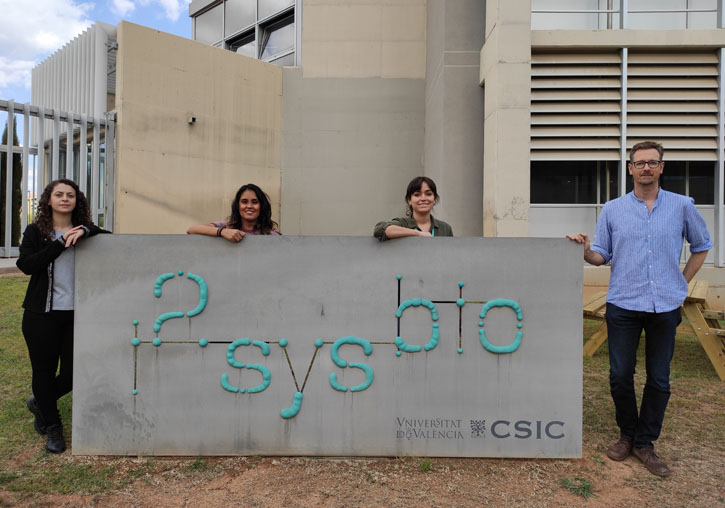
The team led by Manuel Porcar, a researcher at the Institute for Integrative Systems Biology (I2SysBio, a mixed centre of the University of Valencia and the CSIC) has received an IG Nobel Prize for unusual research for their work on the bacterial load contained in chewing gum stuck on the ground for weeks and the evolution of it, in five different countries. The article was signed in October 2020 in Scientific Reports, signed by Leila Satara, Alba Guillén, Ángela Vidal-Verdú and Manuel Porcar himself.
The IG Nobel, awarded on September 9, are a parody of the prestigious Nobel Prizes – in fact, they are awarded in close proximity – and are promoted by the editors of the scientific humour magazine Annals of Improbable Research. Since 1991, they have awarded research that first makes people laugh, but then makes us think. The work led by Manuel Porcar has received the award in the ‘Ecology’ category.
“It was a surprise to receive the IG Nobel Prize, but we also see it as a recognition of the original task and that it can be fun for many ecologists and people who participate in bioprospecting and who spend our lives traveling with a sterile tube in our suitcases to take samples from all over the world and contribute to expanding the arsenal of microbial strains and natural products that have a huge range of industrial and biomedical applications”, explains Manuel Porcar.
According to the researcher, “chewing gums could be vectors of bacterial diseases long after being thrown on the ground. We have found bacteria that can be used to clean chewing gums, because they eat them!”. The expert adds that “gum has a bacterial load that evolves from an oral microbiome to an environmental one in a matter of weeks. Oral bacteria last surprisingly long once the gum is on the floor. In addition, many of the bacteria that we have isolated of the oldest chewing gums have the potential to bioremedy the gum, that is, to degrade it”.
The I2SysBio research team points out that these long-lived residues have been used for human genetic analysis in criminology and archaeology, and further notes that their findings have implications for a wide range of disciplines, including forensic medicine, disease control contagious or the aforementioned bioremediation of gum waste.
The research also showed that the bacterial load in gum changes in a matter of weeks and that oral bacteria last surprisingly long when the gum is on the ground. This research can be applied in forensic medicine or control of contagious diseases.
The study focused on the distribution of bacteria according to the depth at which they are found (superficial, intermediate and lower layers of the waste), the biodegradation capacity of the gum ingredients and the microbial successions after spending three months of outdoor exposure. The bacterial diversity of the samples has been analysed through Massive DNA Sequencing (NGS).
Chewing gums are residues that remain for a long time on indoor surfaces, outdoors, stuck in buildings or even on works of art. For this study the team collected a total of ten samples, two from Spain, France and Singapore, and one from Greece and Turkey. All of them had to be collected from the ground with a sterilised scraper and were transported to the laboratory, where they were kept at a temperature of -80 ºC until analysis.
The article signed by Leila Satara, Alba Guillén, Ángela Vidal-Verdú and Manuel Porcar describes a complete characterisation of the bacterial content of chewing gum using culture-dependent and independent techniques, unlike other investigations that focus on the improvement when cleaning gum thrown to the floor, to making it less adhesive, soluble in water or degradable. In addition, the team remarks that this adhesive material “may contain an important fraction of the oral microbiota, toxins and some pathogens such as Streptococcus spp. and Actinomyces spp., Which remain trapped in the sticky residue and where their survival over time has received very little attention”.
Article: Satari, L., Guillén, A., Vidal-Verdú, À. et al. «The wasted chewing gum bacteriome». Sci Rep 10, 16846 (2020). https://doi.org/10.1038/s41598-020-73913-4
IG Nobel Award Ceremony link.











